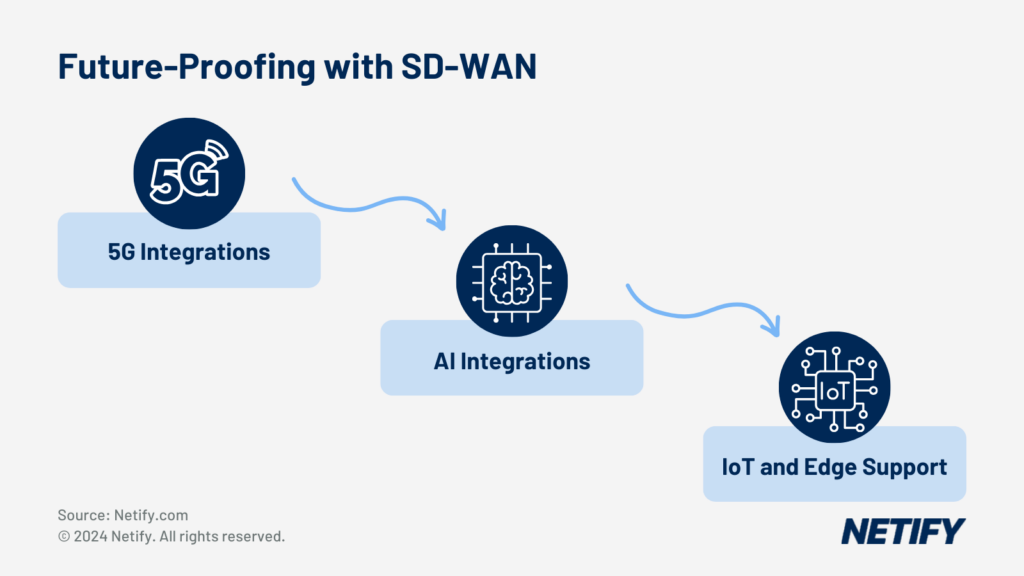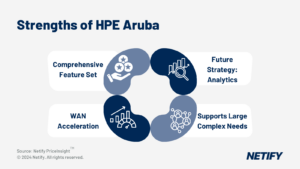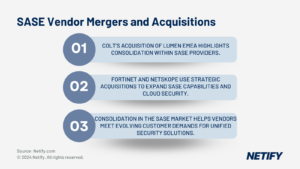| Cisco SD-WAN unifies network performance and security improvements. By leveraging AI, multi-cloud capabilities and scalable architecture, SD-WAN offers secure, high-performance connectivity for enterprises. |
In this article, we provide an overview of Cisco’s SD-WAN solutions with a focus on technical features and integration of technologies. The content aims to discuss how Cisco are delivering their SD-WAN solution as part of their fully featured SASE and SSE Cybersecurity solutions.
- Cisco SD-WAN solutions incorporate artificial intelligence (AI) and machine learning (ML). to improve network performance and security.
- Cisco SD-WAN solutions integrate networking and cybersecurity across the Cisco portfolio to address sophisticated digital threats.
The discussion includes an analysis of afore mentioned Cisco’s Secure Access Service Edge (SASE) and Security Service Edge (SSE) models. These models demonstrate Cisco’s approach to providing integrated networking and security services from the cloud. Cisco SD-WAN (as part of SASE and SSE) combines various security functions with SD-WAN technology to create a unified solution for secure and high performing connectivity.
Table of Contents
Lastly, the article considers Cisco’s vision for the future of their WAN services as a component of SASE and SSE Cybersecurity. There’s a focus on how Cisco have adopted cloud capabilities and security measures.
What do Cisco SD-WAN solutions offer?
Simplified Onboarding and Provisioning: Cisco’s Enterprise networking solutions are designed to make the configuration and deployment process fast by using automation, which also includes out of the box policies to get your business up and running fast.
Advanced Access Control: Artificial intelligence and machine learning enhance the ability of Cisco systems to detect, categorise, and manage endpoint devices. Security policies are enforced with a focus on alert priority.
Network Health Maintenance: Cisco SD-WAN uses telemetry and management tools to provide a perspective on the health of clients, network, and applications.
Scalability: The architecture of Cisco’s solutions is based on scalability. This is achieved by using adaptable router-port configurations – ports are activated when demand is increased.
Cybersecurity: The Cisco’s cybersecurity capabilities offers defence against cyber threats from network to cloud and endpoints.
- Cisco Security Cloud is an integrated security solution that converges protection across the network’s fabric.
- Protection across multicloud environments, which drives Cisco’s solutions to offer simplified operations that scale effectively based on data-informed insights.
- Cisco ensures connectivity is secured via a variety of devices without compromising on security.
Proactive security controls offer a cost effective method to integrate disparate security systems, which streamlines protection and expenditure. In many ways, Cisco security overlay can bring everything together under one centralised management interface.
Integration of Networking and Cybersecurity: The coming together of networking with cybersecurity measures reflects Cisco’s approach to enterprise IT infrastructure. These aspects maintain the balance between high network performance and security defences.
What is Cisco’s Approach to SD-WAN?
Cisco’s SD-WAN offering is designed with multicloud capabilities in mind to ensure secure connectivity and an enhanced experience for both on-premises and cloud-hosted applications.
The Cisco Catalyst SD-WAN introduces a high degree of control over IT infrastructure. Through built-in automation and detailed analytics, the Cisco solution provides IT teams with the power to manage networks with precision across a range of connection types.
By leveraging components of Catalyst SD-WAN, businesses can converge network and security functions with a focus on identity and policy enforcement.
Benefits and Challenges of Cisco’s SD-WAN
Cisco SD-WAN is designed to address the challenges of WAN management by providing a better application experience and promoting security at branch locations.
Cisco benefits typically demonstrate a lift in application performance, a more resilient network, and an improved user experience. Network monitoring and traffic steering move beyond conventional WAN capabilities to ensure better access to cloud platforms and corporate data centres.
However, transitioning from legacy WAN infrastructure presents its own set of problems. The complexities of merging Cisco SD-WAN with existing IT frameworks and scaling the network to meet future needs could pose challenges to organisations. Cisco counters these difficulties as a component of their SD-WAN solutions by providing visibility and featuring integrated security measures, these include zero-trust enforcement and secure segmentation.
Cisco’s SASE (Secure Access Service Edge)
Cisco’s SASE model represents a convergence of networking and security services directly from the cloud, which aims to offer integrated solutions that adapt to the changing demands of Enterprise businesses. By combining security features with SD-WAN technology, Cisco provides a framework to secure and streamline the connectivity of organisations.
Cisco’s SASE Solutions
Cisco has engineered a SASE architecture that merges VPN and SD-WAN functionality with a range of cloud-native security features. These features include secure web gateways, cloud access security brokers, firewalls, and zero-trust network access (delivered as a comprehensive service from the cloud).
At the core of Cisco’s SASE solutions is the coordination between SD-WAN, which optimises performance and cost by directing traffic across leased lines, broadband and cellular, and cloud security components. Cisco Cloud works to monitor and protect data and applications regardless of where the user is located.
The inclusion of zero-trust network access means that no entity is trusted by default, whether inside or outside of the network perimeter. SASE solutions are incorporated by Cisco Umbrella, which has been designed as an ‘umbrella’ to bring together the complete Cisco cybersecurity portfolio.
Why Cisco SASE makes sense for larger Enterprise solutions
For larger enterprises, Cisco SASE emerges as a good-fit solution due to its capacity to meet complex needs via centralised management and real-time application optimisation.
Cisco’s focus on providing reliable connectivity and high availability ensures that all users are able to securely access data centre resources and cloud services including SaaS applications such as Salesforce, infrastructure-as-a-service (IaaS) platforms, and critical applications hosted on Microsoft Azure.
Cisco’s SASE solutions address the challenges larger enterprises encounter with network security and access. These challenges include maintaining consistent policy enforcement across devices, while adapting to the bandwidth demands and diverse user requirements.
The scalable nature of Cisco’s SASE framework means it can keep pace with enterprise growth, reducing operational expenditure (OPEX) and minimising the need for troubleshooting. This integrated approach aligns with the enterprise security networks of tomorrow.
Cisco’s SSE (Security Service Edge)
Defining Cisco’s SSE
Cisco’s SSE is a convergence of network security functions delivered through the cloud to provide a unified and centralised security posture. SSE includes various security capabilities, which include enterprise firewall, secure web gateway, cloud access security broker (CASB), zero trust network access, and data loss prevention (DLP).
Cisco SSE features are designed to offer safer cloud interactions for Enterprises by securing access to network resources, bringing together comprehensive security services with advanced policy enforcement.
Cisco’s SSE Implementation
The implementation of Cisco’s SSE is via Cisco Umbrella, which is designed to offer protection to users by integrating with the data plane and control plane of the network architecture.
Through Cisco Umbrella, automation and granularity in policy enforcement enhance the user experience and strengthen network visibility. URL filtering, authentication services, and monitoring for potential data exfiltration or insider threats are amongst the services offered. Cisco’s SSE ensures end-to-end network integrity and safeguarding data centres and cloud edges.
Cisco’s SSE in Hybrid Work Environments
Cisco’s SSE provides secure site-to-cloud and cloud interconnect communications for the hybrid workforce. As traditional WAN infrastructures evolve, Cisco’s SSE offers an enterprise solution that not only maintains network integrity but also enhances control and management over distributed devices.
Cisco supports the transition to SDCI (Secure Digital Connectivity Infrastructure) and mitigates the limitations imposed by MPLS WAN technology. Cisco’s vision focuses on optimising the network’s security and performance.
Integration of AI and Machine Learning in Cisco’s Solutions
Cisco’s incorporation of artificial intelligence (AI) and machine learning integration targets enhanced network and security efficacy within cloud environments and enterprise architectures. The overall intent is to enable dynamic management and advanced threat protection.
AI in Cisco’s Network and Security Solutions
Cisco leverages the extensive data mined across their SD-WAN solution to provide AI-driven reporting. Specifically, Cisco incorporates machine learning to find patterns and anomalies that signify security threats.
In terms of managing networks, Cisco’s AI tools provide improved automation across tasks such as routing and troubleshooting, which in turn results in operational efficiency and reduces OpEx.
The future of Cisco SD-WAN includes using AI for more than just cybersecurity. Cisco recognises that AI plays a role in transforming how global workforces connect and communicate. By using natural language processing and audio intelligence, Cisco’s technology is moving toward AI becoming a major component of their technology.
Enhancing Cybersecurity with AI in Cisco’s Ecosystem
Within Cisco’s cybersecurity framework, AI helps to extend threat protection capacity. By embedding AI into Cisco’s SASE / SSE cybersecurity portfolio, the platform is capable of reacting to known threats but is also capable of countering emerging threats. Cisco’s AI-driven tools augment end-to-end monitoring and analytics to enable a more responsive and proactive cybersecurity stance.
In customer-facing domains, Cisco’s AI enhances the customer experience in contact centres by supporting initiatives such as proactive sustainability and the use of generative AI.
Cisco focuses on securing its AI applications to ensure trust and reliability. This effort towards safe, responsible use of AI underscores the company’s dedication to cybersecurity protection.
Real-World Implementations of Cisco’s Solutions
Enterprises from sectors as varied as sports to healthcare have adopted Cisco’s SD-WAN solutions. The NFL secures their network infrastructure using Cisco technologies to protect against data exfiltration and ensure network integrity.
Renown Health’s healthcare services have undergone a digital transformation with the integration of Cisco’s network solutions to address the sector’s demand for reliable connectivity and enhanced patient care.
The Australian oil and gas company Ampol has fortified their infrastructure and connectivity, critical services and servers with the aid of Cisco Catalyst SD-WAN, to streamline operations and manage traffic in alignment with enterprise bandwidth demands.
Lessons Learned and Best Practices from Cisco’s Implementations
Analysing multiple case studies reveals that successful outcomes hinge on integrating comprehensive SaaS applications and deploying SD-WAN Cloud Onramp for smooth management of SaaS and Cloud service.
For example, lessons from Cisco’s ventures into professional services highlight their focus on network and application security in protecting against insider threats while maintaining cost-effective WAN architecture.
Best practices point towards the significance of technological adoption in sectors such as education and government, where Catalyst SD-WAN Manager has provided routing and management of enterprise traffic.
Cisco’s Roadmap: Predictions and Directions
Cisco is being reshaped with the integration of IT and cloud services- Cisco offers a unified platform designed for on-premises and cloud operations. Their SD-WAN features consist of IoT, Wi-Fi with 5G, with AI and machine learning enhance analytic capabilities.

- Future Proofing With SD-WAN
Cisco’s SD-WAN roadmap features single sign-on mechanisms, API key exchange faculties, and sustainable networking solutions within data centres. Innovations extend to strengthening network assurance through ThousandEyes integration.
The prospects of artificial intelligence in shaping future data centre blueprints are substantial, acknowledging a transition towards Infrastructure-as-a-Service (IaaS) models, coupled with Cisco’s blueprint for Cloud-edge WAN architecture.
As enterprise demands grow, the need for more sophisticated cloud networking solutions intersects with Megaport collaborations and the Catalyst SD-WAN Manager’s efficiency and complexity management.
Cisco’s vision is not merely about the immediate future but one that encapsulates sustainability and security.
Frequently Asked Questions
What are the primary advantages of deploying a Cisco SD-WAN solution?
The primary advantages include an enhanced user experience, improved business agility, and greater bandwidth efficiency. Cisco’s SD-WAN solution enables organisations to optimise cloud and on-premises network performance while reducing operational costs. For detailed insights into how these advantages support modern IT infrastructures, consider the Cisco Catalyst SD-WAN Solution Overview.
How does Cisco SD-WAN ensure secure connectivity across corporate networks?
Cisco SD-WAN offers an integrated security stack that encompasses application-aware enterprise firewall, intrusion prevention, and URL filtering. The solution leverages a zero-trust model to secure traffic across the WAN, and this ensures that data and applications remain protected, regardless of the user’s location.
What are the core components that constitute the Cisco SD-WAN architecture?
The architecture of Cisco SD-WAN consists of vSmart Controllers for the centralised management and orchestration of traffic, vBond Orchestrators for the initial setup of devices, vEdge Routers for connecting the services to the WAN, and vManage for configuration and monitoring.
In what ways can Cisco SD-WAN be integrated with existing network infrastructure?
Integration with existing infrastructure is architected by supporting various transport modes including MPLS, broadband, and LTE. Organisations can implement Cisco SD-WAN to complement existing MPLS services or replace them altogether, allowing for phased transitions without disrupting ongoing business processes.
Which Cisco router models are compatible with the SD-WAN deployment?
A wide range of Cisco routers, including ISR 1100, ISR 4000, ASR 1000, and vEdge series models, support SD-WAN deployment. These router models offer a variety of throughput rates and form factors to meet the diverse needs of organisations seeking to leverage SD-WAN technologies.
How does the configuration process of Cisco SD-WAN differ from traditional WAN setups?
Unlike traditional WAN which often requires manual configuration at each site, Cisco SD-WAN provides a centralised management platform. Through vManage, network administrators can implement policy changes and configurations across the entire network, improving efficiency and reducing the possibility of human error.


